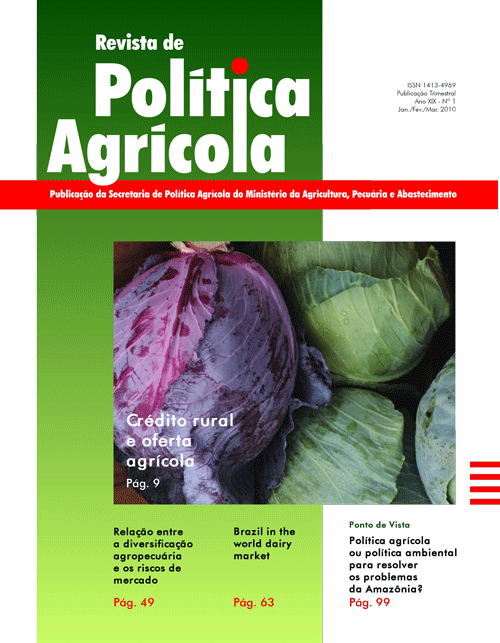Rural credit and agricutural supply
Keywords:
rural credit, agricultural supplyAbstract
The objective of this paper is to estimate the financing impact of the total expenditure on cotton, rice, beans, corn, soybean and wheat outputs, as well as on the agricultural inputs – fertilizers, labor and pesticides – between 1976 and 2005. The analysis is based on duality applied to the production theory and it is assumed that farmers face budget restrictions. The output supplies and conditioned input demands are estimated from a Translog multi-output, multi-input restricted profit function, where the total production credit is considered a proxy of the total expenditure. Farmer expectations with respect to crop prices are incorporated to the estimation based on the Quasi Rational Expectation Model. The output and input responses to the total expenditure are positive and statistically significant except for cotton, wheat, fertilizer and pesticides. The short run output supply response to own prices is inelastic, except for wheat, which presents elastic response to its price. The conditioned input demand is elastic to its own price. Acreage has a positive impact on the output supply and it is influenced by land productivity. The main conclusion is that farmers face budget restrictions to purchase inputs, and a government credit program might increase the agricultural supply.Downloads
How to Cite
Castro, E. R. de, & Teixeira, E. C. (2015). Rural credit and agricutural supply. Revista De Política Agrícola, 19(1), 9–16. Retrieved from https://rpa.sede.embrapa.br/RPA/article/view/321
Issue
Section
Artigos Científicos


